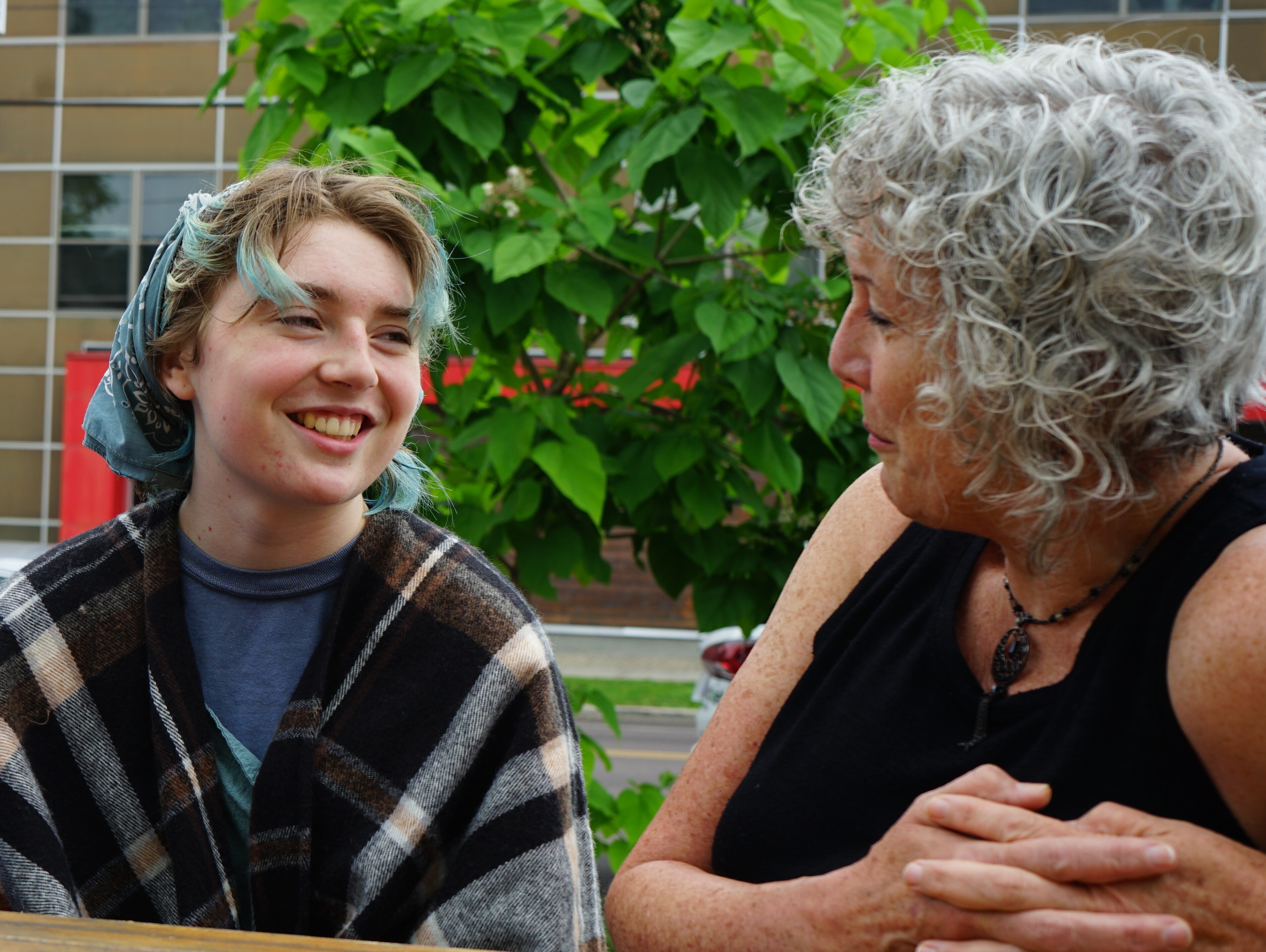
Terms and Definitions
Key Terms
We offer these terms as a good place to start, and so that we have some shared understanding as you move through the toolkit. But! Your youth will always be the best source of information about their own experience. Listen for the ways they self-describe, encourage their self-expression, and stay curious and open to learning from them.
-
Aromantic: The lack of romantic attraction, or a person identifying with low or no romantic attraction.
-
Asexual: Asexuality, also called the Ace Spectrum, can be defined in a variety of ways, including as an umbrella term. It usually describes the absence of sexual attraction (or not experiencing a desire to act upon sexual attraction).
-
Bisexuality: An umbrella term for people who experience sexual and/or romantic attraction to more than one gender (pansexual, fluid, omnisexual, queer, etc). While bisexuality historically described attraction to two genders, current understandings of gender have shifted this term to be more inclusive of a gender spectrum, describing attraction to people of two or more genders.
-
Cis or Cisgender: Adjective that means “identifies as their sex assigned at birth” derived from the Latin word meaning “on the same side.” A cisgender or cis person is not transgender. Cisgender does not indicate biology, gender expression, or sexual identity. In discussions, one should differentiate between women who are trans and women who are not trans by saying “trans women and cis women.” Cis is not a slur. Note that cisgender does not have an “ed” at the end. In most cases, “trans” and “cis” by themselves are sufficient descriptors.
-
Demisexuality: Describes people who feel sexual attraction, but as a secondary characteristic that only occurs after a strong emotional connection has already been established.
-
Gender Dysphoria: Anxiety and/or discomfort regarding one’s sex assigned at birth and the gendered assumptions assigned to that sex.
-
Gender Fluid: A changing or “fluid” gender identity.
-
Intersex: Describing a person with a less common combination of hormones, chromosomes, and/or anatomy that are used to assign sex at birth. Parents and medical professionals usually coercively assign intersex infants a binary sex and have, in the past, been medically permitted to perform surgical operations to conform the infant’s genitalia to that assignment. This practice has become increasingly controversial as intersex adults speak out against the practice. The term intersex is not interchangeable with or a synonym for transgender (although some intersex people do identify as transgender).
-
LGBTTQQIAPP: An umbrella acronym of queer identities short for lesbian, gay, bisexual, two-spirit, trans, queer, questioning, intersex, asexual, pansexual, polysexual (sometimes abbreviated to LGBT or LGBTQ+). Sometimes this acronym is replaced with “queer” as an umbrella term, which is best used as an adjective, i.e. “queer community.”
-
Nonbinary (Also Non-Binary): An umbrella term for all genders other than female/male or woman/man, most often used as an adjective (e.g. Jesse is a nonbinary person). Many nonbinary people identify as trans and not all trans people identify as nonbinary.
-
Pansexual: A person who is capable of being attracted to many genders. Sometimes the terms omnisexual and bisexual are used in the same manner.
-
Queer: A general term for gender and sexual identities that are not cisgender and/or heterosexual. There is a lot of overlap between queer and trans identities, but not all queer people are trans and not all trans people are queer. Queer as an identity can sometimes come with an activist connotation - and some embrace the historical interpretations of “strange or odd” as a way to shift or change the status quo. The word queer is still sometimes used as a hateful slur, so although it has mostly been reclaimed, it is wise to be careful with its use.
-
Sex Assigned At Birth: The assignment and classification of people as male, female, intersex, or another sex assigned at birth, often based on physical anatomy at birth and/or karyotyping.
-
Trans or Transgender: An umbrella term for people whose gender identity differs from the sex they were assigned at birth. The term transgender is not indicative of sexual identity, hormonal makeup, physical anatomy, or how one is perceived in daily life. Note that transgender does not have an “ed” at the end. In most cases, “trans” and “cis” by themselves are sufficient descriptors.
-
Two Spirit: A term describing the gender identities of some indigenous people in North America. This term should not be used to describe one's gender identity by those who are not indigenous.
Key Concepts
Much like the language just mentioned, the concepts included here are just an overview to get us started. They will continue to evolve overtime, and so will we!
-
Adultism: Prejudice or discrimination against young people as a group.
-
The Gender Binary: A system of viewing gender as consisting solely of two, opposite categories, termed “male and female,” in which no other possibilities for gender or anatomy are believed to exist. This system is oppressive to anyone who defies the roles associated with their sex assigned at birth, but particularly those who are nonbinary, gender fluid, or do not fit neatly into one of the two prescribed categories.
-
Gender Expression/Presentation: The manifestation of one’s gender identity through clothing, hairstyle, voice and vocal cues, etc.. Many transgender people seek to make their gender expression (how they appear) match their gender identity (who they are), rather than their sex assigned at birth. However, this is often made difficult due to lack of access relating to cost or safety, or, in the case of young people, adult permission or lack thereof. Someone with a creative gender expression may or may not be transgender. Transgender people may or may not have gender expressions that match other peoples’ expectations of their perceived gender.
-
Gender Identity: One’s internal sense of being male, female, neither of these, both, or other gender(s). Everyone has a gender identity, including you. For transgender people, their sex assigned at birth and their gender identity are not necessarily the same.
-
Heteronormativity and Cisnormativity: These terms refer to the assumption that being straight (heteronormative) and cisgender (cisnormative) is the norm or the default. This can be internalized, displayed in interpersonal, community, and policy assumptions, and furthers the marginalization of queer and trans people.
-
Sexual Identity or Orientation: A person's physical, sexual and/or other form of attraction to others. Gender identity and sexual orientation are not the same. Trans people can be heterosexual, bisexual, lesbian, gay, asexual, pansexual, queer, etc. just like anyone else. For example, a trans woman who is primarily attracted to other women may identify as lesbian.
-
Transphobia: Irrational fear, discomfort, distrust, or malice directed towards trans people or trans concepts. This word is used similarly to homophobia, xenophobia, misogyny, etc. Transphobia has historically been used as a defense strategy to justify violence toward transgender people, a practice we categorically reject as inherently offensive and dangerous.

